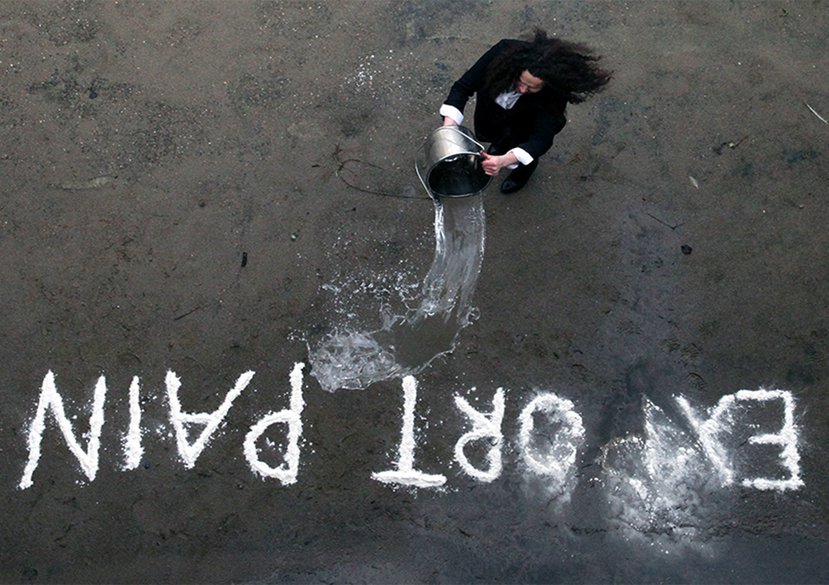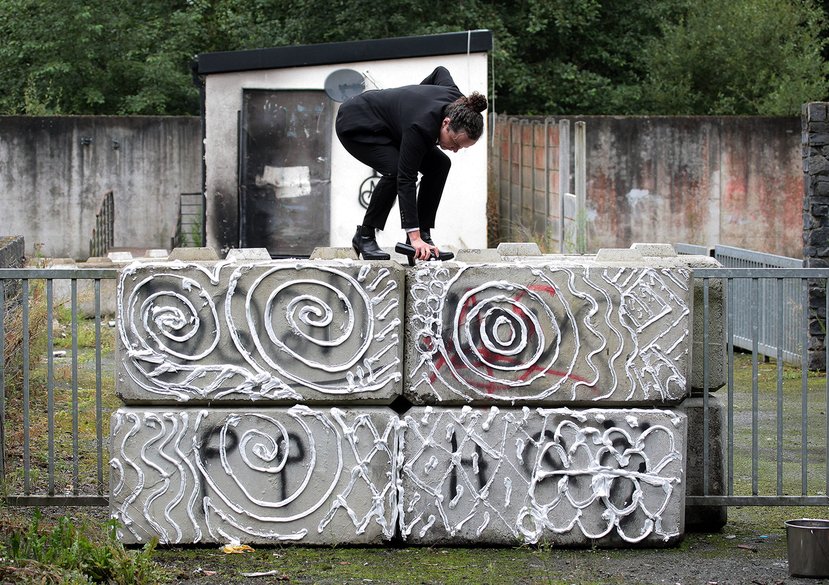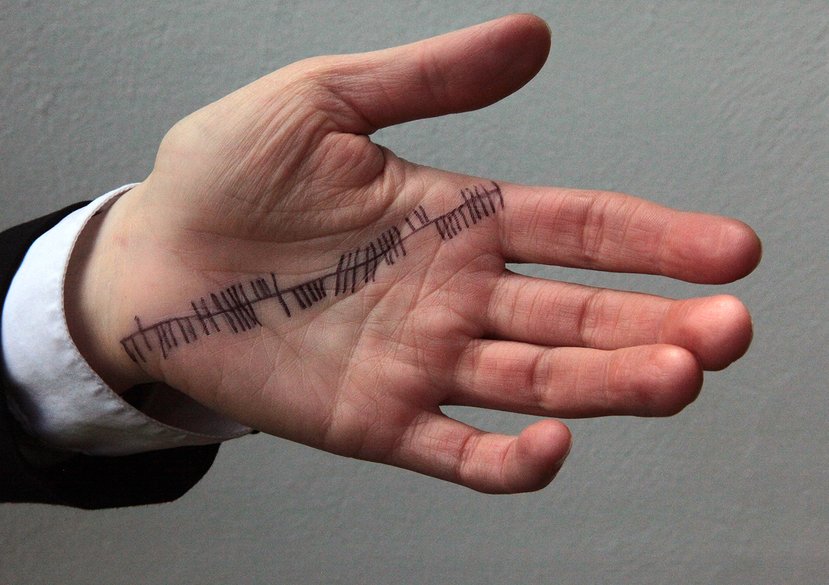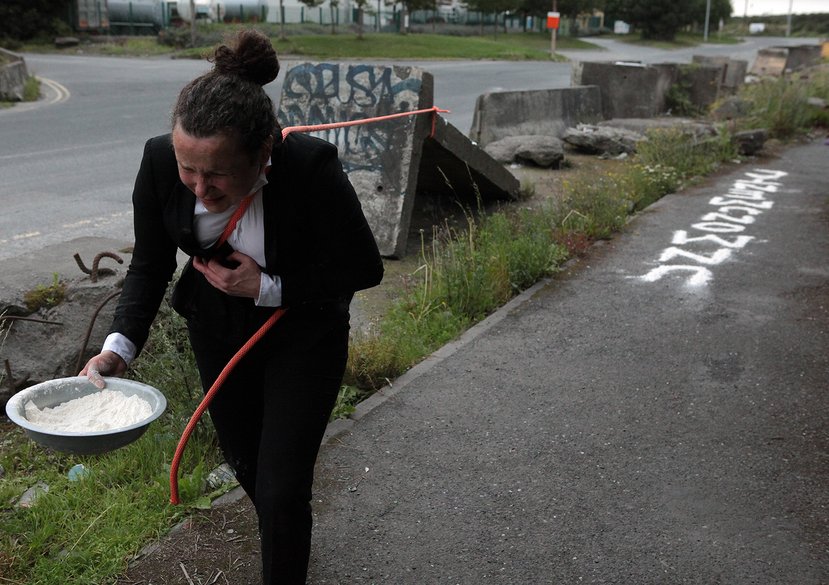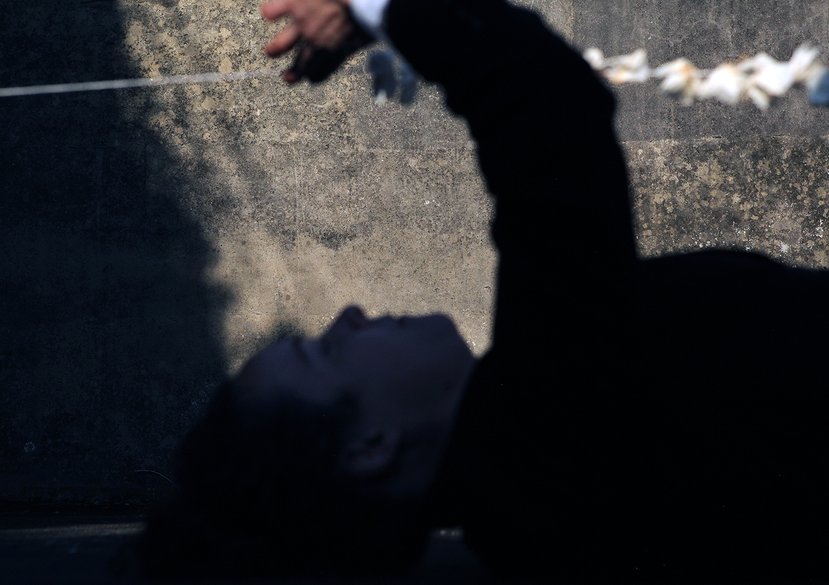
Up Against the Wall: People's Monuments to a Game of Resistance at the Edge of the Wild
Current geopolitics provide the backdrop for an artistic enquiry into the position of women in Irish culture, then and now, with reference to the institutional structures of patriarchal control that shape lived experiences. The stark vernacular architecture of the outdoor handball alley will function as representative, in the Irish landscape, of the rules and boundaries that define women’s social and sensual identity under state and religious law. An important feature of Irish cultural heritage, the Big alleys are primarily free standing, unroofed, structures built between the late nineteenth and late twentieth century in rural and urban areas. These fragile structures, at the edge of decay, are preserved in their community as people’s monuments, carriers of a conflicted cultural memory and identity.
The literature of James Joyce will allow for the dissenting voices of an active feminine sexuality to resonate throughout the project and is culminated in an articulation of a Voice of Rivers as one of agential flow. Other female voices from a more recent troubled past speak of the violence of which women were both objects and subjects.
Our bodies are not our own. The art works, in the form of live performances and photographic works that I make, reflect on the effects of power structures on women’s bodies and minds. Evocations of the traumatic events experienced by women during the troubles north and south of the border as well as the neglect and abuse suffered by women under the domination of the church over the procreative female body are an ever-present component of the works. My private body becomes a public body.
The performance work takes the form of encounters with sites and locations. Works unfold in response to the often-toxic alchemy of past events that lingers there. Lucretius’s concept of the ‘swerve’ – the unpredictable movement of atoms – in his poem On the Nature of Things provides a conceptual framework to think about the artist’s encounter with histories. The encounter is not random but contingent upon the nature of the elements at play always already inclined to swerve in unpredictable ways, therefore always open to a future. Within the encounter I seek to sensuously inhabit a physical place, listening closely to the murmur of cultural memory, imagining resistance at the edge of the Wild.
This project puts into question persistent traditional modes of gender hierarchy and the conditions of women towards a redefinition of our inhabitation of cultural place. The stark concrete architecture of Irish Outdoor Handball Alleys serves as both physical backdrop for new performance and photographic works and as cultural signifier to explore issues of identity and more specifically the place of women in Irish culture. In the performance works, the place of woman becomes a ‘sense’ of place through the intervention of the artist’s own body within the chosen sites. Encountering traces (visible, invisible) of past events that are given sensuous, meaningful form in the encounter.
Key details
School, Centre or Area
Supervisors
Gallery
More about Paula
Conferences
Presentation of work ‘Border’ at the Launch of PROVA 5 research Journal at the Southwark Gallery, London. (2022)
Presentation of a new live performance work ‘Voice of Rivers’ at the International James Joyce Symposium at Trinity College Dublin. This symposium was part of the 2022 celebration of 100 years of Ulysses in Dublin.
Presented photographic and film works at the RCA Art Research Biennale and The Experimental Film Festival at the Museum of Modern and Contemporary Art (IMMCA) in Seoul. (2021)
Presentation of research paper titled ‘From spirals to tags’ at the University of Copenhagen Conference and summer school, curated by Carol Mavor. (2019)
Additional information
In so many ways this is a subversive and resistant practice. Undermining the obvious, deliberately changing expectations of surface, site and the interventions made there. Overdrawing languages and signs from distant cultures to present crises. Working in sites of borders, or the misplaced, or those disappeared, or the fields of the broken, those in the edge communities. Markers and re-markers to those forgotten and lost: contested uneasy grounds re-inhabited with the ephemeral dissolving touch that serves to bear witness. To the where or the why or just what secrets each particular site of landscape shelters and holds. Memory enshrined by the histories of events from the there and then, summoned up in the here and now.
